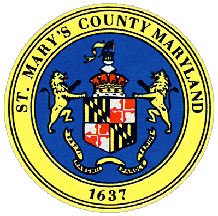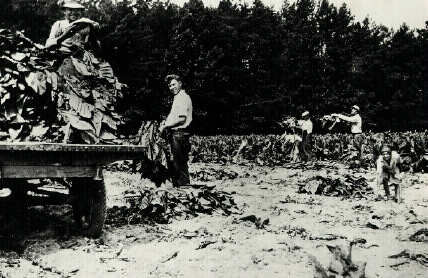View Maryland Counties
- Allegany
- Anne Arundel
- Baltimore City
- Baltimore County
- Calvert
- Caroline
- Carroll
- Cecil
- Charles
- Dorchester
- Frederick
- Garrett
- Harford
- Howard
- Kent
- Montgomery
- Prince George's
- Queen Anne's
- St. Mary's
- Somerset
- Talbot
- Washington
- Wicomico
- Worcester
St. Mary's County

St. Mary's County occupies the southeastern extremity of the western shore of the Chesapeake Bay, forming a peninsula bounded on the southwest by the Potomac River, on the east and northeast by the bay and the Patuxent River, and on the northwest by Charles County. St. Mary's, the first Maryland county, was established in 1637, probably by an order of the provincial governor, Leonard Calvert. The county is named in honor of St. Mary, the mother of Jesus.
At St. Clement's Island, the Ark and Dove, carrying the first Maryland settlers, dropped anchor on March 25, 1634 after a stormy passage across the Atlantic. "This we call St. Clement," wrote Father Andrew White, one of the Jesuit priests who accompanied the expedition, "here we first came ashoare; here by the overturning of a shallop we had allmost lost our mades which we brought along. The linnen they went to wash was much of it lost, which is no small matter in these parts . . . In this place we first offered [the sacrifice of the mass], erected a crosse, and with devotion took solemn possession of the Country."
St. Mary's County abounds with history. The St. Mary's Town Lands, which encompassed the village known as St. Mary's City, have been preserved through the efforts of the St. Mary's City Commission and developed into an outdoor history museum. Here visitors can see the reconstructed State House of 1676, built in 1934 to celebrate the Maryland Tercentenary; the Leonard Calvert Monument marking the site of a mulberry tree near which the settlers from the Ark and Dove are supposed to have assembled to hear the Royal Charter read after their arrival; and nearby St. Mary's College of Maryland, established in 1840 to commemorate the founding of Maryland and the religious toleration practiced throughout most of the seventeenth century.

MSA SC 1477-6562
Canning garden produce was an annual ritual for most farm women. Mrs. Eugene Smith had several hot summer days of toiling over a wood cook stove ahead of her as she prepared string beans for canning in St. Mary's County in 1940.

MSA SC 1477-5212
In the early colonial period, the cultivation of tobacco was Maryland's principal commercial activity. For many years, the plant was used as a form of money. Growing the same crop year after year gradually exhausted much good farmland, especially on the Eastern Shore.

MSA SC 1477-5222
The students of Miss Katie Johnson's class in St. Mary's City line up outside their schoolhouse, c. 1915.

MSA SC 1477-6382
Piney Point, on the lower Potomac, was once a stylish beach resort. Popular with political types from Washington, the place became a social center for dignitaries including Presidents James Monroe, Franklin Pierce, and Theodore Roosevelt. This view was taken from a steamboat as it approached the wharf on July 26, 1908.

MSA SC 1477-5205
St. Mary's County is a peninsula. Until World War II, when the Navy built a large facility there, the population had been dwindling. In 1940 there were fewer people living in the area than in 1790. The Redgate store near Leonardtown served the area around Breton Bay.

